One of the reasons the Germans lost the Battle of Britain almost 80 years ago ties into the problem with plug-in hybrids today.
Range on the batteries.
The Lutwaffe’s fighters could only remain in the air over England – covering the Luftwaffe’s bombers – for about 15 minutes before they had to head back to occupied France for a fresh tank of gas. Then the British Spitfires tore up the undefended German bombers. 
Today’s plug-in hybrids – like the new plug-in version of the Mini Countryman – have a similar gimp.
Juiced up, the Mini can go about 12 miles before it needs more juice. It won’t stop moving after this happens – but it will start burning gas. At which point, it’s not particularly fuel efficient – it averages about 27 MPG, virtually the same as the non-hybrid (and high-performance) John Cooper Works version of the Mini.
And it doesn’t carry much gas, either – only 9.5 gallons vs. 16.1 gallons for the non-hybrid Mini.
So either way, it doesn’ go very far without needing to pit.
Mini touts two.
First, it can take you where you’re going without burning any gas – if where you’re going falls within the radius of action of the fully charged battery pack. That’s a plus for people who don’t mind paying extra to avoid internal combustion.
And who still want speed – which is the other thing Mini touts.
The Countyman hybrid is nearly as quick as the John Cooper Works version – zero to 60 in about 5.8 seconds.
In other words, it’s a hybrid that doesn’t suck.
Which makes driving it a lot more fun.
Even if it’s not very economical.
A Countryman (which is Mini’s five-door hatchback wagon) that goes both ways: gas or electric.
It hasn’t got as much range on electricity as some other plug-in hybrids, such as the Toyota Prius Prime and the Chevy Volt. But it’s much quicker – and perkier – than those two.
It is, after all, a Mini.
It’s also all-wheel-drive, which neither of those two are.
Base price is $36,800 – vs. $37,800 for the performance-equivalent John Cooper Works (and non-hybrid) version of the Countryman.
The next closest thing to the plug-in hybrid Countryman is probably the Kia Niro plug-in hybrid. Which almost no one seems to know about. The Niro – which is also a small wagon, like the Countryman – costs less ($27,900 to start) and gets fantastic mileage (45 MPG, average) and can go more than twice as far (26 miles) on electricity only.
But – like the Prius Prime and the Volt – it’s front wheel-drive-only and not very speedy.
WHAT’S NEW
The Countryman hybrid is Mini’s first hybrid.
In addition to its gas-electric drivetrain, this model gets hybrid-specific gauges and trim as well as an additional “fuel” port on the driver’s side front fender. This is where you plug the Countryman in to recharge.
It’s not slow.
It can go in the snow.
It has the same room as the non-hybrid Countryman (the batteries don’t consume the cargo space).
WHAT’S NOT SO GOOD
The price is high.
The range on the batteries isn’t much.
The Niro plug-in goes much farther – on the batteries or on gas.
Mini’s mission was to replicate or at least closely emulate the acceleration capability of the high-performance Countryman JCW – which comes with a 2.0 liter turbocharged four cylinder engine that makes 228 hp and 258 ft.-lbs. of torque – while also being capable of not burning any gas at all.
At least, for awhile.
On the gas-burning side, the Countryman hybrid relies on the same 1.5 liter, turbocharged three cylinder engine that propels the standard (non-hybrid) Countryman. It makes 134 on its own. This is supplemented in the hybrid Countryman by a 7.6 kilowatt battery pack and electric motor for a combined output of 221 hp and 284 ft.-lbs. of torque.
What you end up with is the capability to get to 60 in less than six seconds – which is much quicker than the standard non-hybrid Countryman with just the 1.5 liter gas engine – which takes about 9.3 seconds to get there. And it’s nearly as quick as the high-performance Countryman John Cooper Works model, which can’t do zero to anything without its 2.0 liter gas engine running.
In Europe – where there are internal combustion engine No Go zones – this is a real problem for anyone who wants to get somewhere without walking – and never mind the 0-60 time. This is the true reason for the appearance of models like this – which are sold over there as well as over here. Since they have to sell them over there, why not at least try to sell them here, too?
Even though there aren’t IC engine No Go zones (yet) there are people who like the idea of combustion-free locomotion, at faster-than-walking-speed.
With the hybrid’s batteries fully charged, you can engage the electric drive – there’s a specific toggle switch for this located just ahead of the gear shifter – and drive for about 12 miles at normal road speeds without the gas engine coming on. It will eventually come on by itself, automatically, as the battery charge depletes – and if you need additional power.
For the rest of your trip – if it exceeds the 12 mile electric-only range – the system works like a standard (non plug-in) hybrid drivetrain, cycling back and forth between electric and gas operation.
In this mode, the Countryman hybrid averages about 27 MPG – about the same as the JCW Countryman.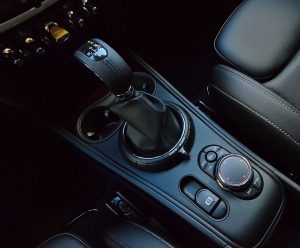
Like the JCW model, the hybrid Countryman is all-wheel-drive, but with the electric motors powering the rear wheels. An automatic transmission is also standard in both. If you prefer a manual transmission, the only 2018 Countryman model that still offers it is the standard/non-hybrid Countryman with the 1.5 liter engine – and without AWD.
Recharging via a normal 120V household wall outlet takes about six hours or so. The charger has a ten foot cord and a monitor box that tells you when the batteries are fully topped off and also alert you to a fault with the system, in the event that happens.
Though quick, the Countryman hybrid doesn’t go very far – regardless of the motive source.
This is because in addition to a short leash on the batteries – its best-case electric-only range is less than half the range of the Kia Niro plug-in hybrid and barely a fourth of the Chevy Volt’s – it also has a very small gas tank.
Less than ten gallons – which goes away quickly once the batteries wilt and you’re relying mostly on the IC engine for motive power. Very best case IC range – assuming 27 MPG average fuel consumption – is about 243 miles. The JCW Countryman – which has a 16.1 gallon tank – can travel 400-plus miles on a full tank of gas.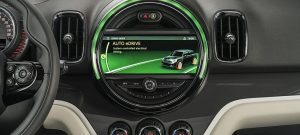
It’s not that the hybrid Countryman is a gas pig. It’s not. I actually beat the advertised mileage, averaging 28.8 MPG during my weeklong test drive.
But the small tank – and short range on the batteries – often make it seem like it is a pig. If your drive is outside the Mini’s electric-only orbit, you’ll be recharging (or refueling) frequently.
On the other hand, the thing does move.
When you floor it, the Countryman makes a stronger case for itself. It’s not necessarily an economic case – but now we’re on emotional rather than rational grounds. And actually, there is some rationality here. The standard (non-hybrid) Countryman is a cute thing and a useful thing, in terms of having much more cargo and backseat room than the regular Mini hatchback. But it’s genuinely slow – and not particularly economical. The FWD version only manages 24 city, 34 highway – which averages out to about the same as the hybrid’s IC average of 27 MPG.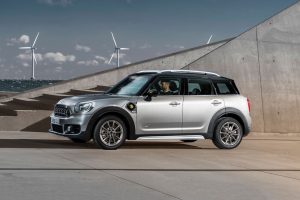
But it needs almost four seconds longer to achieve 60 MPH. That’s a difference you don’t need a stopwatch to measure.
The hybrid may need a top-off more frequently – but it has the gumption to get going the regular Countryman hasn’t got. And if you use it for short hops – within the orbit of its 12 mile electric only range – you could conceivably make something of an economic argument for it vs. the JCW.
Or just because you like not burning gas – but still want to be able to haul ass sometimes, too.
Another thing to know about this hybrid: It’s not as obviously hybrid, in terms of the way it drives. For instance, most plug-ins have pretty obvious regenerative braking systems. The electric motors are double-tasked to work as generators. They convert the vehicle’s momentum back into electricity – which is fed back to the batteries.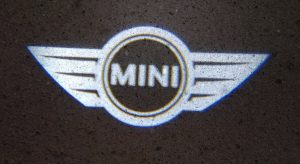
The drag of this is obvious. Let off the gas and the vehicle slows – even without actually applying the brakes.
But the hybrid Mini decelerates – and brakes – like most other cars. If you let off the gas, the Mini coasts. The gas engine will turn itself off, usually – and you can keep track of this by watching the Charge/Power indicator to the left of the speedometer. But if you had to guess by feel, you probably never would.
The only obvious hybridness is the Countryman’s heavier-feeling handling. Empty – of passengers – it weighs about 3,950 lbs. Because of the batteries (and the electric motors). The otherwise-identical JCW Countryman weighs about 3,630 lbs. – a difference of about 320 lbs.
The extra torque of the hybrid’s electric motors makes up for the weight when accelerating – but there’s no hiding it when you’re cornering.
Some of the Mini’s otherwise sprightly feeling steering and responsiveness is given up, but the car is still more agile and fun to drive than slow-motion rivals like the Niro plug-in hybrid, which is also heavy in the curves.
And terrible in the snow – which the AWD Mini isn’t.
Mini dresses the Countryman hybrid like its fellow Countrymen, with just a few cosmetic and functional differences between it and the others.
There’s the plug-in port on the driver’s side fender – and inside, there’s a hybrid specific instrument cluster – both the main panel and the menus that can be selected via the rotary knob input on the center console. You can adjust the climate control and other settings to minimize energy consumption and – as in other hybrids – Mini includes a “coaching” display that helps you learn to drive in such a way as to maximize range on a full charge.
One of the neatest things about the hybrid Mini, though, is that it has about the same room inside as the non-hybrid Countryman. It’s not uncommon for hybrids – especially those which did not begin life as hybrids but were converted into them, after the fact – to give up cargo room for the sake of finding room for the batteries. The Prius and the Kia Niro are the only hybrids on the market which aren’t offered as a not-hybrid. The others – including the Countryman – all were originally designed to be regular IC-engined cars, which means that when they were on the drawing board, finding room for a hybrid battery pack (and the rest of the gear) wasn’t taken into account.
The result – usually – is a very small trunk. Check the specs of other converted hybrids and see.
But the hybrid Countryman’s capacities are virtually the same as the regular Countryman’s. Both have 17.6 cubic feet of cargo space behind the second row, with the second row in place. Folded, the hybrid has 46 cubic feet; the non-hybrid 47.6 cubic feet. It’s a hair-splitting difference.
The Niro plug-in hybrid’s specs are even better – 19.4 cubic feet behind the second row and 54.5 cubes with the second row folded. It also has a bit more front seat legroom (41.7 inches vs. 40.4 for the Mini; both have about the same back seat legroom, 37.4 vs. 37.6 inches, respectively) so the Kia is the more practical – as well as more economical, both to buy and to drive.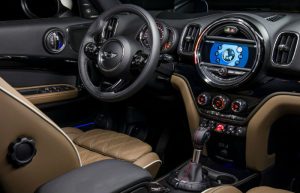
But it hasn’t got the flair – not to mention the speed – that the Mini offers.
Or, the AWD.
Which also gets you heated seats as part of the deal. And a full-length panorama glass sunroof.
One other thing you get is mechanical kinship to BMW. The Countryman is a spin off of the BMW X1 and so it’s not surprising you can get BMW-esque luxury stuff such as a heads-up display, automated parallel parking and a top-drawer, 12-speaker Harman Kardon audio rig.
But you can also custom-fit your Countryman with any of the many dealer-available cosmetic bits and pieces and almost endless color/stripe/graphics packages that Mini offers and which business-suited BMW doesn’t.
THE REST
When you pop open the gas door you’ll see a second hole – or what would have been one – if Mini could have sold you the diesel engine that the Countryman is offered with in other countries, but not here.
It’s nice to be able to go 12 miles without burning any gas. But it’d be even nicer to be able to go 50 miles on a gallon of diesel.
And imagine what a turbo-diesel hybrid could do.
If you started with an engine capable of 50 MPG instead of 27 MPG.
It makes too much sense, I realize.
THE BOTTOM LINE
The hybrid Countryman isn’t exactly efficient – and the economics are dubious.
But it is fun.
. . .
Got a question about cars – or anything else? Click on the “ask Eric” link and send ’em in!
If you like what you’ve found here, please consider supporting EPautos.
We depend on you to keep the wheels turning!
Our donate button is here.
If you prefer not to use PayPal, our mailing address is:
EPautos
721 Hummingbird Lane SE
Copper Hill, VA 24079
PS: EPautos magnets – they’re back! are free to those who send in $20 or more to support the site. Also, the eBook – free! – is available. Click here. Just enter you email in the box on the top of the main page and we’ll email you a copy instantly!






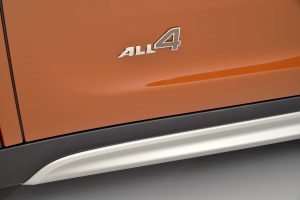











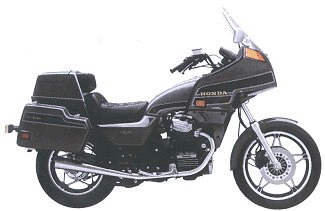
My first Mini Cooper S 1275cc? back in the seventies was remarkable for the fact that you could have the engine out in 20 minutes.
Get two pals,old mattress, turn in over on its side and the subframe came right out.
I guess those days are behind us?
It was a hoot to drive.
Is part of the reason for small gas tanks CAFE? AKA, like why full size spares are rare too. They are looking for anything to shave weight I am guessing.
I’m sure that’s it. That and no one markets the size of the fuel tank.
It’s so silly though- as weight has so little to do with mileage. My little 3-cyl. diesel tractor weighs 2300 lbs. and gets about 7MPG on the road (I actually calculate it! :D).
It’s all about gearing; having an engine that isn’t so small as to having to be working at near top capacity all the time; and aerodynamics. Weight means nothing…as mentioned above, with the 6cyl. Cherokee only getting 2MPG more than the Excursion which weighs almost FOUR THOUSAND pounds more.
Fuel tanks seem to be a place to skimp. My Cherokee has a whopping 13 gallon tank. It barely gets me 300 miles if the wind is calm and I stick to the speed limit. I lose 2-5 MPG with the roof rack. I’m dreading what happens when I start towing with the thing. Better have a jerry can on the back just in case. My old Audi TDI (RIP) had a 13 gallon tank but I could go over 600 miles. And I could really fill up the thing, right up to the filler cap because there was no carbon canister to worry about.
My 2011 F-150 has a 30 gallon tank. I can run 700 miles between fill-ups but it takes so darn long to fill I usually don’t go below 1/2 a tank. My dream was to have a 30 gallon tank in my A3. Imagine driving cross country on one tank!
I had a Grand Chimpanzee briefly as a back-up vehicle….but the damned thing only got 2MPG more than my Excursion, which weighs twice as much and has almost double the number of cylinders (V-10 vs. I-6) so down the road the Cherokee went!
Now, the Excursion…. 44 gallon tank (Can’t remember the last time I actually had it to “full”) and even with it’s pathetic MPG’s can go nearly 500 miles on a tank….. (It’s always nice taking your own portable gas station with ya wherever ya go…)
I had the pleasure of owning a Mini JCW coop. The little 2 seater with the backwards baseball cap, with a Rentech tune it was a BLAST to drive. My V8 M3 was faster but that little thing as left a smile on my face. I miss it… The new gen Mini’s are really mini anymore….
Oops, aren’t really mini anymore.
Only eight hours of charging for a WHOLE 12 miles? Ah! The marvels of technology!
/sarcasm.
So, what exactly is the point of a car like this again, other than virtue signaling?
I think this is precisely why people are buying these virtually impractical, non-utilitarian rides. Cars are still being used as braggadocious status symbols. But now, instead of displays of excess wealth and opulence, they are meant to showcase one’s “virtuosity”, which is absolute hypocrisy!
Hi Nunzio, the point is probably complying with regulations. Ive noticed here in the UK, there are some crazy lease deals on this car through BMW/Mini finance, which by my calculation over the term, wouldnt even get close to even the depreciation on the car. But they made then, and now they have to shift them one way or another. And a lease is a good way to kick the can down the road and take a hit at a later stage……
Hey Ya Nasir!
Ah, but don’t forget: After collecting those lease payments, plus a few grand when the car is turned-in, for having a hair on the seat or a grain of sand between the tire treads (“above normal wear and tear”), they then go and sell the car for about $2K less than what it would have sold for when new. The depreciation is essentially eaten up by the fact that the price of a brand new rose by the same amount over the course of the lease… It’s crazy- fractional-reserve inflationary debt-based economics- so we have 20 year-old high-mileage pick-ups selling for over $10K… but Oh! they’re gonna pay for it when it all comes crashing down.
Nasir, I recently saw a vid of 10,000 Nissan Altima’s parked at an airport. It was an insane thing. While it makes Nissan’s production numbers look good it can’t help but be a huge negative to the bottom line. And this was right after the next year models were released.
I’ve always had a problem with the mini, mostly in its earliest form in which there wasn’t interior room and it was slow. Oh, I know, it wasn’t slow slow, not like a Prius, but slow as in not being able to keep up with a buddy’s one ton dually crewcab Powerstroke. Surely it should outrun a pickup.
A friend bought on for his sainted schoolmarm wife after which he gave her a new set of custom wheels for xmas. Sweet….ain’t it. I didn’t take him to task though. Each to their own even though mini drivers tend to drive like they’re the only ones on the road and in some areas seemed to regularly put the biking crowd into the pasture.
It was a damn sight better than the Prius he traded it for though. And then he got mad when I pointed out they were the ugliest cars I’d ever seen. He cussed me out online and I laughed at him. There, we’re even. Then he put custom wheels or almost did on the P word and I sublimely made the point of putting ribbons on a sow. I could feel the ethernet heat.
But the mini countryman, hell, if they’re going to use 3 syllables and end it with “man” I know a much better terms but they wouldn’t get it as the Brits don’t get a lot of things.
I could change tires on an 8 N and boost the engine and get 5 seconds to 60 if that’s what made a good ride….and it would be a good ride for awhile. But like a mini, there’s no place to put a 120 qt. cooler.
An ol boy down the road from me, let’s call him Ray……..Wylie……summed up the English pretty well in only 28 words without using more than a two syllables in any of them. “Well when you’re down on your luck….and you ain’t got a buck, in London you’re a goner. Even London bridge has fallen down…..and moved to Arizona. He and another old boy named Jerry Jeff, probably made enough money off that to buy the London bridge again and put it by the Texas copy on the Brazos at Waco….but they’re practical ol boys and probably thought investing in the Spoetzl Brewery was a better idea. Jerry said he wan’t too impressed with it the first time he heard it…..but it grew on him, esp. every time the mailman pulled up to the mailbox and dropped off a sack of checks.
My son has a good running 8N, and I still have my father’s ’64 Ford 2000 4-Speed. They will both be plugging along and I’ll drive mine to the store, if need be, when all this “Super Whizzer Hyper Tech” comes crashing down. Hell, I can still get parts for the ’64 at Tractor supply, for God’s sake, not to mention my own.
I have a ford 3600 – no idea what year – and can’t find the electronics anywhere. Some jackass replaced the alt with an all in one that is the wrong pulley size and just doesn;t work worth a crap. I haven’t driven it in years because I can’t find a regulator + alt anywhere that will turn at the right rpm. And my New New Holland? It is actually an LS tractor (I think from Korea) and I had to CUT OFF a big chunk of 1/2 inch plate from the front loader mounts just to get the starter off / on.
Tractor Supply would be a truly great place if they had a beer barn. They’re frequently next to Walmarts so not fighting the crowds would be a plus. Of course I don’t buy beer at Wally preferring a private establishment.